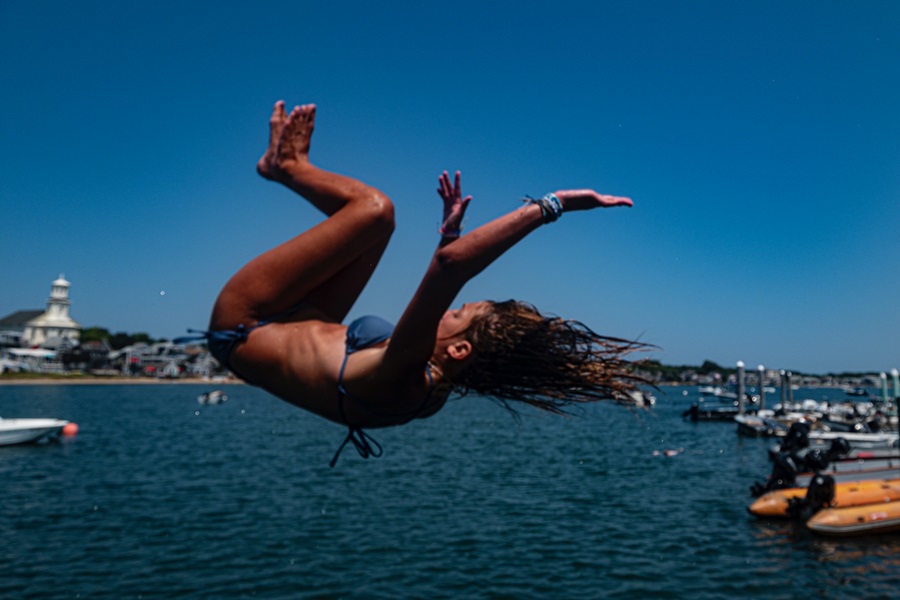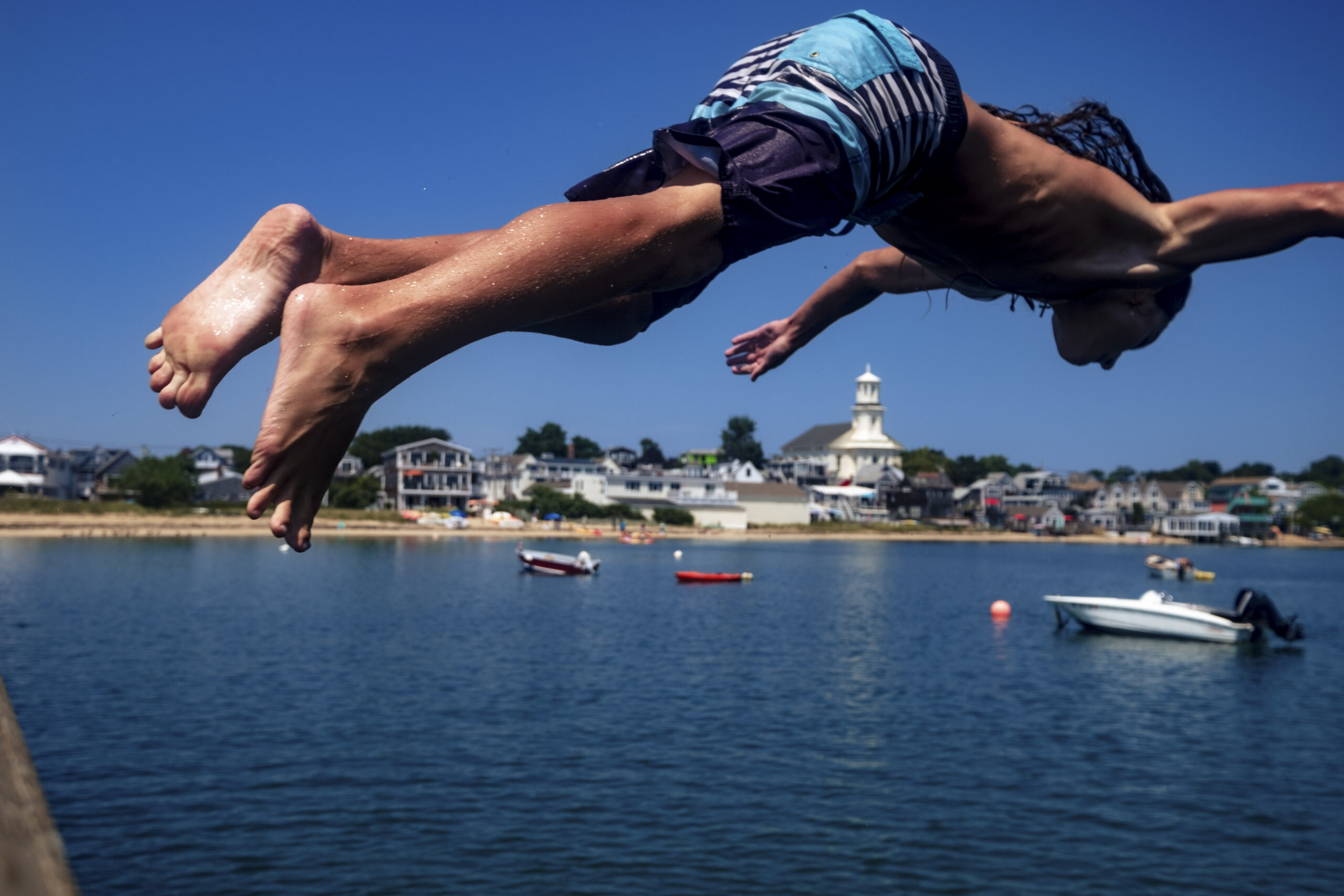PROVINCETOWN — Pier jumping is a tradition here. On almost any summer day when the tide is high, you’ll see people laughing, holding hands, and then leaping off MacMillan Pier into the cold and dark water about six feet below.
The prime spot for jumping is right in the middle of the pier, by the first dock on the left. Even though a sign warns “No pier jumping,” there is a rope on one of the pillars that indicates when it is safe to jump. At very low tides, the danger might be obvious: you can see the bottom. But at other times jumpers rely on the rope: if the waterline is below it, that means the tide is too low.

That’s why Pier Manager Jamie Demetriou says the staff don’t let people jump at night. But at other times, she says, kids are allowed to jump. “That’s not something we want to take away from them,” she says.
For some, jumping is a family tradition, handed down from one generation to the next. On hot summer afternoons, Aaron Avellar, 11, is one of 5 to 10 kids waiting his turn. There is not a formal line, but jumpers make their moves carefully so as not to collide on the way in. Aaron, who comes to Provincetown from California every summer, says his father also used to jump when he was a kid.

Adults don’t always leave pier jumping behind, though. Stella Hurvitz, 13, who moved to Provincetown from Boston this year and has spent summers here all her life, says her fathers and cousins go jumping with her. Greg Fenton, 58, who lives in Brookline, has been jumping for over 30 years — ever since he first started visiting Provincetown. His teenage kids also jump.
“It’s kind of a rite of passage,” says Fenton. “You’re not really a townie until you do it.”

Friends go jumping together. That’s what Vinny Potenza, 10, who comes from Boston, says he likes best about pier jumping. He goes with his older sister and with friends from the West End Racing Club.
It’s not easy to get back on the dock after jumping in. Jumpers climb onto boats and pull themselves up with a short rope. Up until a few years ago, there was a ladder, but Fenton says it was removed to discourage kids from jumping — he thinks not everyone approves of the tradition.

Fenton says that the ladder was taken down after a boy got an electric shock while pier jumping. A lot of jumpers recall that event, but not correctly: most people think the boy was shocked because he jumped from an electrical box while wet. A Boston 25 news story from that time reports it differently: On Labor Day weekend of 2019, a boy who was walking along the pier on his way to jump happened to step on a metal plate that had electricity flowing to it because of a “compromised” wire from a nearby streetlamp. The town repaired the wiring, the report said.
Besides being aware of the height of the tide, there are several other things to look out for when jumping: seals and fish swim by. One big seal is a local celebrity. To some, his name is Jimmy. Others call him Charlie. Then there are other kids, the railing, and broken glass and lobster traps on the sea floor. Sometimes, the surface of the water shines with splotches of oil. The smell of fish rides the wind from a certain direction, usually from the fishing boats coming into the harbor.
For these reasons, not everyone takes the leap.

Amira Saunders, 13, who is here from Virginia, does not pier jump. Amira says that her parents don’t allow her to jump, but even if they did, she wouldn’t do it. She worries about encountering the seals or about getting hurt by jumping when the water is too low. Still, she likes to watch friends and strangers jump.
It’s hard not to watch people cannonballing into the bay. After someone lands an impressive dive into the water, when her head pops back up, there are cheers.
“Pier jumping is an exhilaration thing,” says Stella.
This is Maddie Gunn’s third summer of pier jumping. She will be a freshman at Nauset Regional High School in the fall.



